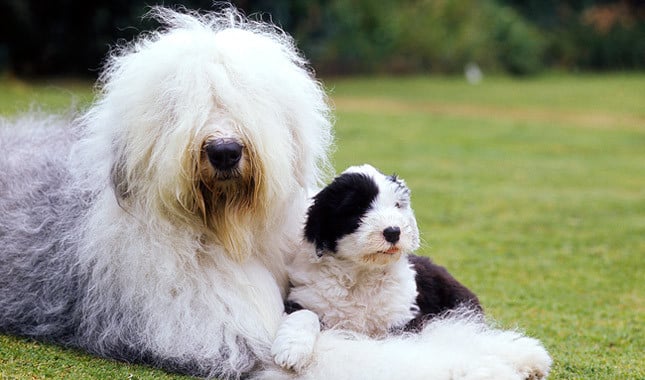15 Lesser-Known Wild Dog Species And Their Fascinating Traits

Forget the pampered pups on pillows—let’s talk about the untamed legends sniffing through deserts and vanishing into the forests. These wild dogs aren’t just survivors; they’re myth-breakers with jaws and brains built for the wild. Think you know dogs? Here are ten that’ll totally change your perspective of these animals.
New Guinea Singing Dog

Perched in the highlands of Papua New Guinea, this elusive canine is best known for its eerie, harmonic calls. Researchers long believed it extinct in the wild until recent sightings changed that narrative. Its flexible spine allows agile climbing, which is rare for wild dogs.
Dhole

Also known as the Asiatic wild dog, the dhole doesn’t howl or growl like a wolf. Instead, it whistles. They are found in Southeast Asia and parts of India, where they thrive in forests and grasslands. Their playful nature can quickly shift when protecting young or territory.
Bush Dog

In South America’s tropical forests, a short-legged hunter moves almost like an otter. The bush dog swims with ease and works in small groups to trap prey. Despite their cute appearance, these dogs display a surprising level of teamwork when closing in on targets, even using scent to coordinate movements.
African Wild Dog

Spotted coats and giant ears may be their signature, but it’s their cooperation that grabs attention. African wild dogs hunt with precision, using tight formations and constant communication. In packs, they share food evenly, showing a level of social harmony rare in the animal kingdom. Few predators match their hunt success rate.
Maned Wolf

The maned wolf, South America’s tallest wild canine, stands out with its long legs, which allow it to see over tall grasses. Though it’s neither a true wolf nor fox, it belongs to its own genus, Chrysocyon. Its strong scent often confuses farmers, despite its primarily fruit-based diet.
Ethiopian Wolf

The Ethiopian wolf, found mainly in Ethiopia’s Bale Mountains, hunts rodents with precision across Afro-alpine meadows. Its orange fur and narrow snout help it blend in. However, as farming expands, its territory shrinks, making conservation efforts increasingly important.
Culpeo

Chile and Argentina shelter the culpeo—a foxlike predator with the attitude of a much larger animal. It doesn’t form packs but can defend itself impressively when threatened. Agricultural communities have clashed with culpeos for generations, though they play an important role in rodent control across southern South America.
Side-Striped Jackal

The Side-Striped Jackal is a shy and less aggressive wild dog than its black-backed cousin, and it roams Central African woodlands. This scavenger’s strength lies in patience, often trailing large predators for leftovers. It prefers dense areas where it can avoid confrontation and raise pups without drawing attention from hyenas or leopards.
Cape Fox

Bernard DUPONT/Wikimedia Commons
With large eyes and a silky coat, the cape fox appears gentle, but its nighttime strategies are anything but. It thrives in southern Africa’s arid zones, feasting on insects and small mammals. Solitary yet alert, it listens for underground movement before striking. Speed aids its quick retreats from larger threats.
Golden Jackal

Across parts of Europe and Asia, the golden jackal fills ecological gaps left by wolves. The species adapts to farmland, wetlands, and even urban edges with surprising ease. It uses intelligence to exploit seasonal changes, and nature gives it that opportunity. Mostly active at dusk, the jackal adjusts its habits when humans get too close.
Sechuran Fox

Not quite a fox, not quite a dog, this desert dweller blurs both lines. The Sechuran fox survives Peru’s dry coastal regions by feeding on fruits and insects. Due to its nocturnal lifestyle, it rarely crosses paths with humans. Moreover, its quiet, slow movements help it conserve energy in the heat.
Tibetan Fox

Tibetan Fox has square jaws and intense stares that make it unforgettable. Living among high-altitude plains, it rarely strays far from its pikas—the small mammals it depends on for food. While it seems solitary, it occasionally teams up with bears to flush out prey.
Hoary Fox

In Brazil’s Cerrado, a small, pale-coated fox trots quietly beneath the stars. The hoary fox avoids confrontation by sticking to insects and fruits rather than livestock. This strategy keeps it off farmers’ radars. Slim legs and keen ears help it navigate low grasses while listening for the soft rustle of beetles.
Raccoon Dog

Despite its name and masked face, this animal shares more with foxes than raccoons. Native to East Asia, the raccoon dog hibernates when winters hit hard—unusual for a wild dog. Monogamous pairs of these stick together for life, which adds a rare touch of loyalty among them.
Indian Fox

Tiny yet bold, the Indian fox darts across open scrublands with its bushy tail held high. It prefers dawn and dusk for activity, avoiding heat and danger. Though threatened by habitat loss, it adapts by nesting near crop fields, and its sharp vision allows it to detect movement from surprising distances.






